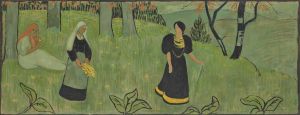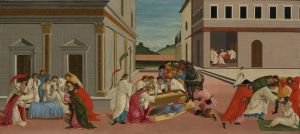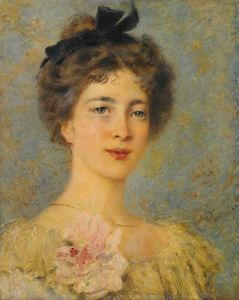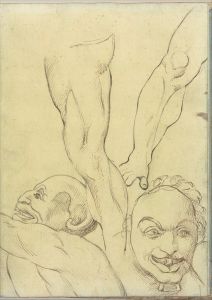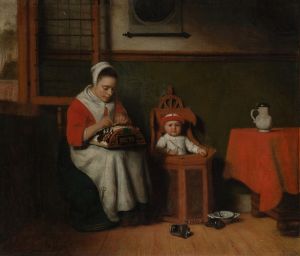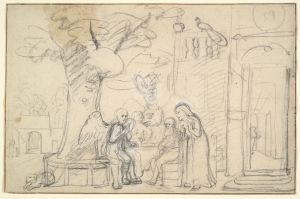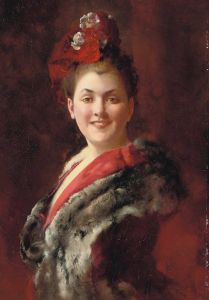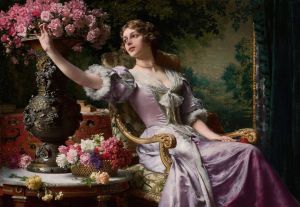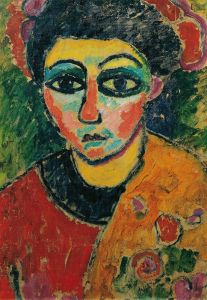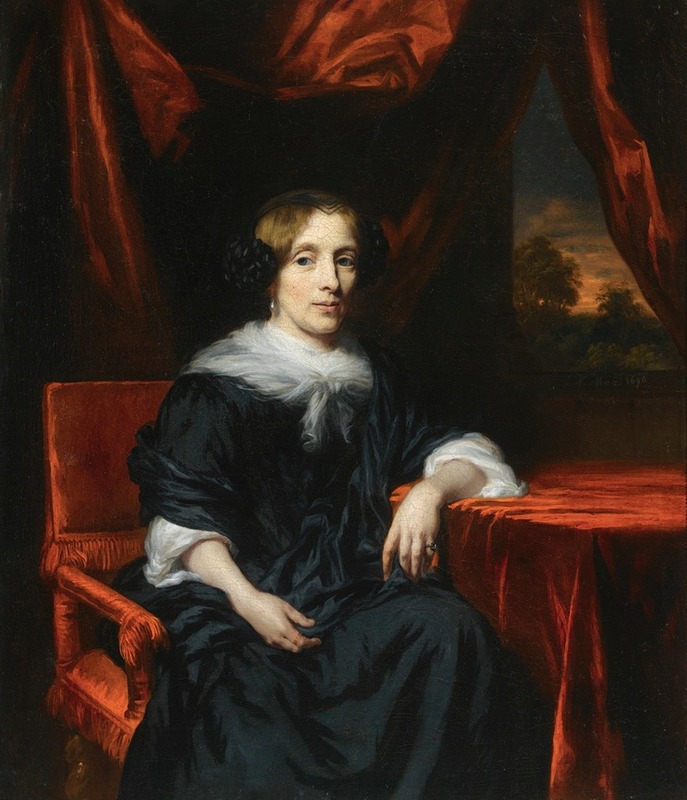
Portrait of a Lady In Black Dress
A hand-painted replica of Nicolaes Maes’s masterpiece Portrait of a Lady In Black Dress, meticulously crafted by professional artists to capture the true essence of the original. Each piece is created with museum-quality canvas and rare mineral pigments, carefully painted by experienced artists with delicate brushstrokes and rich, layered colors to perfectly recreate the texture of the original artwork. Unlike machine-printed reproductions, this hand-painted version brings the painting to life, infused with the artist’s emotions and skill in every stroke. Whether for personal collection or home decoration, it instantly elevates the artistic atmosphere of any space.
Nicolaes Maes was a prominent Dutch painter known for his portraits and genre scenes during the Dutch Golden Age. Born in 1634 in Dordrecht, Maes was initially a pupil of Rembrandt in Amsterdam, which significantly influenced his early work. Over time, Maes developed his own style, moving away from Rembrandt's dramatic chiaroscuro to a lighter palette and more elegant compositions.
"Portrait of a Lady in Black Dress" is one of Maes' many portraits that exemplify his mature style. Although specific details about this particular painting, such as the identity of the sitter or the exact date of creation, are not well-documented, it is consistent with Maes' work from the latter part of his career when he focused primarily on portraiture. During this period, Maes became one of the most sought-after portrait painters in the Netherlands, especially among the wealthy bourgeoisie.
The painting depicts a woman dressed in a black gown, a common fashion choice of the time, which often symbolized wealth and status. The black dress is rendered with meticulous attention to detail, showcasing Maes' skill in capturing the textures and folds of fabric. The sitter's attire, along with any jewelry or accessories, would have been carefully chosen to convey her social standing and personal taste.
Maes' portraits are known for their psychological depth and the way they capture the character and presence of the sitter. In "Portrait of a Lady in Black Dress," the woman's expression and posture would have been crafted to convey both her personality and her social position. Maes often employed a soft, diffused light in his portraits, which added a sense of intimacy and immediacy to the depiction.
The background of the painting is likely to be understated, focusing attention on the sitter. This approach was typical of Maes' portraits, where the emphasis was placed on the individual rather than elaborate settings or props. The simplicity of the background would have served to highlight the sitter's features and attire, ensuring that the viewer's attention remained on her.
Maes' transition from genre scenes to portraiture marked a significant shift in his career, aligning with the tastes and demands of his clientele. His ability to capture the subtleties of human expression and the nuances of social status made his portraits highly desirable. "Portrait of a Lady in Black Dress" is a testament to Maes' mastery in this genre, reflecting both his technical skill and his understanding of the cultural context of his time.
While specific information about this painting is limited, it remains an important example of Nicolaes Maes' contribution to Dutch portraiture. His work continues to be studied and appreciated for its artistic merit and its insight into the society of the Dutch Golden Age.





